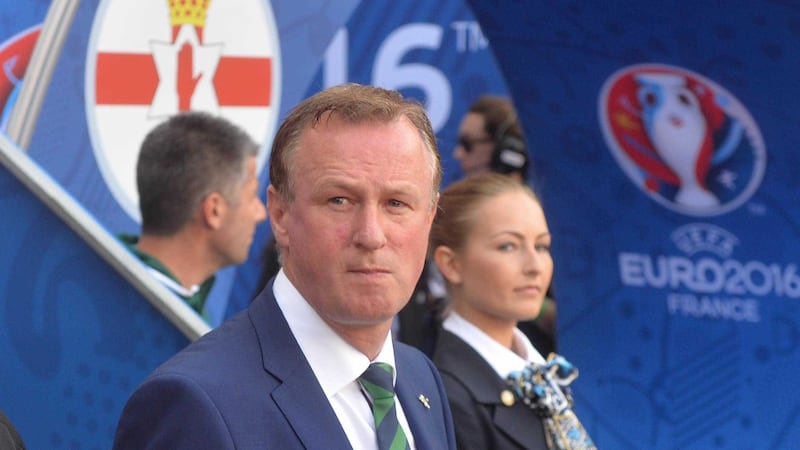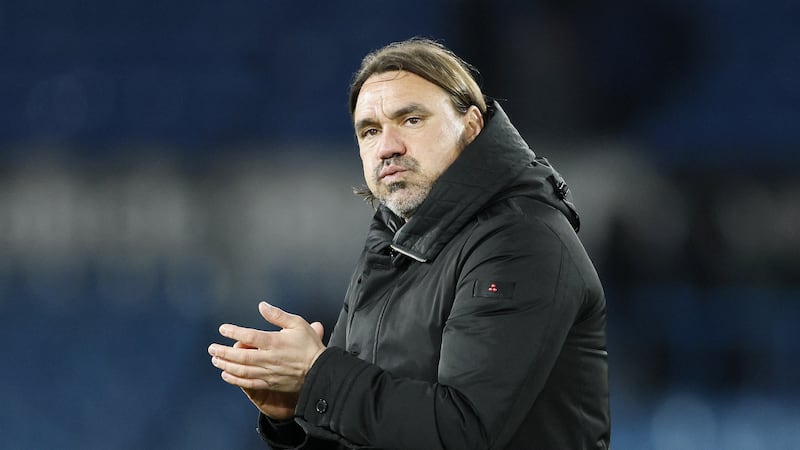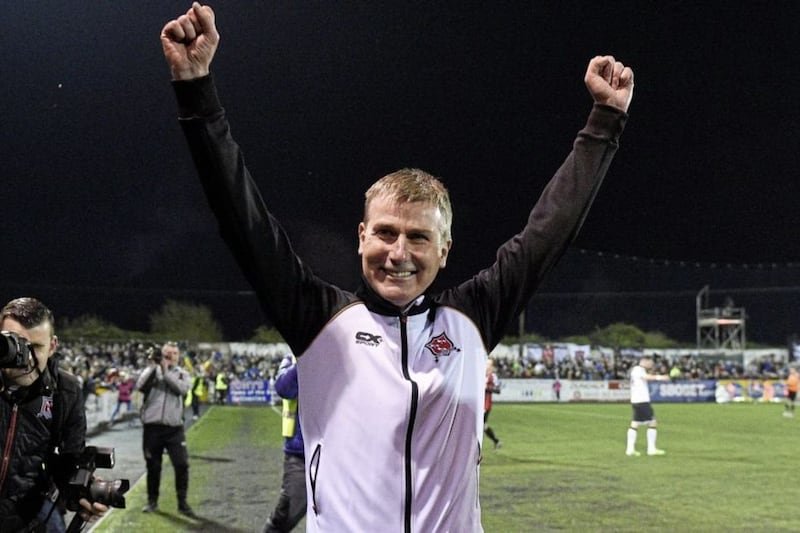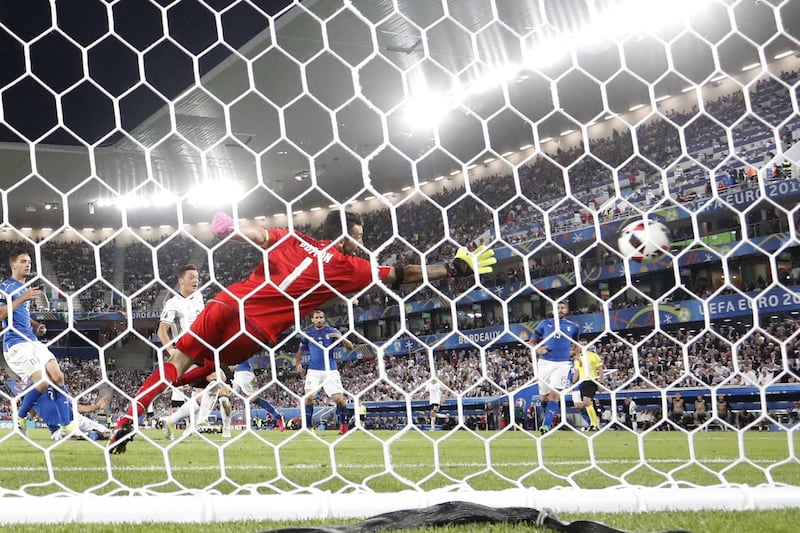MODERN sport is so much about the bottom line, but the top line is extremely important in soccer too.
As in Gaelic football - and now even in hurling - managers and coaches are bringing more players behind the ball, making formations increasingly difficult to work out and line out. Soccer systems are still easy enough to spot, but however many defensive players there are deployed, the most important number is of the player(s) up front.
It’s more than 90 years since the 2-3-5 formation fell out of favour, overtaken by the ‘WM’/ 3-2-2-3. As the title of Jonathan Wilson’s tactical tome Inverting the Pyramid suggests, the trend has always been for more defenders and fewer attackers.
The WM was followed by the ‘MU’/ 3-2-3-2, then by 4-2-4; next the ‘wingless wonders’ of 4-3-3, then 4-4-2, then 4-5-1. In recent years, we’ve even had 4-6-0, although that isn’t necessarily negative, as Barcelona and Spain have shown. If most of the six are flooding forward, then there will be plenty of chances created.
Those GPS stats which show the average position of individual players are the best indicator of how a team has really played, how defensive or attacking they have been. Northern Ireland went with a 5-4-1 against Poland in their Euro 2016 opener and one consequence of that essentially defensive formation was a complete lack of shots on target - and only two efforts actually directed at the goal, both of which went wide.
Due to the experimentation in this year’s pre-tournament friendlies, the expectation had been for two forwards in a 5-3-2/3-5-2 formation. Defender Jonny Evans quite rightly made the point post-match that there’d only been one up front throughout the qualifying campaign - but the top line was usually different throughout those 10 games.
Certainly, the 4-3-3 was often really a 4-5-1, depending on personnel and possession, or lack of it. Without the ball, the wide midfielders would drop deeper; if Corry Evans happened to be one of those, he was more withdrawn anyway. However, wingers Niall McGinn and Stuart Dallas both enjoyed significant gametime, as did Jamie Ward, as much an attacker as a wide midfielder.
That meant there were always players up in support of Kyle Lafferty, especially with Chris Brunt as a left-back, who liked to get forward. His knee injury was a significant blow to this side, given the danger his set piece deliveries posed, often finding the head of Gareth McAuley.
The loss of the crucial Brunt to cruciate ligament damage was a major factor in Michael O’Neill’s decision to move to a system of three centre-halves and wing-backs. My view is that British and Irish players are most comfortable with a back-four, but Northern Ireland have certainly defended well recently - the Polish goal was the first conceded from open play in six games. Yet, fielding three centre-halves can leave gaps down the channels. If the wing-backs sit deep to close those off, then that extra defensive stability comes at a cost further up the pitch.
Against Poland, the plan was to have a midfield diamond ahead of the back-five, with Paddy McNair and Olly Norwood in the wide-ish midfield positions. They were quickly pushed back into a line of three either side of Chris Baird though, leaving skipper Steven Davis increasingly isolated and lone-striker Lafferty even more alone.
If Davis drops deeper to get on the ball, then he has to have targets to aim for ahead of him. Targets. Not just Lafferty. And certainly not with the wing-backs sitting deep, rather than getting forward to offer wide options. Even when Conor Washington came on as a second striker after 65 minutes, the wing-backs still largely stayed back.
The system only became a back-three late in the game, in a 3-4-1-2, with wing-backs Conor McLaughlin and Stuart Dallas pushed up alongside Davis and Norwood, with third substitute Jamie Ward going in behind Lafferty and Washington. Ward is a willing runner, especially out wide, but he’s not a ‘number 10’ who will split defences with passes through the middle.
The squad’s greatest weakness is in attacking central-midfield. Davis is a terrific player, quick feet, able to pick passes and has added goals to his game. Yet, there’s no one similar on the panel - pushing Paddy McNair into that area, as happened against Belarus and Poland, proves that point. Davis isn’t the only player able to carve out opportunities, of course.
It is possible to win free kicks in dangerous positions, or corners, by launching long balls towards a target man or runners into the channels and score from those. But it’s asking a lot of runners to get on such punts if they are starting from very deep positions.
Besides, you can’t create space for your attackers if you don’t draw at least some of the opposition defenders out. The Polish full-backs were rarely put on the back foot. Their two centre-halves knew they only had to mark one man for most of the match.
There’s much for Michael O’Neill and his management team to ponder ahead of Thursday night’s second game against Ukraine. Systems involving sweepers or liberos lead to 3-5-2 and Jonny Evans undoubtedly has the ability to bring the ball out from the back and instigate attacks in that formation. McNair could be a powerful athletic option in central-midfield.
There’s also a strong case for reverting to four at the back, with Jonny at left-back, in a 4-3-3/4-5-1. That increases the likelihood of getting more attacking players on the pitch, including natural wide players like Dallas and McGinn, the latter always posing problems with his pace - and supplying assists.
It’s all very well defending stoutly, keeping the ball out of your own area but, when you get it forward, you must retain possession and have players on the ball in areas that can hurt the opposition. That’s the bottom, middle, and top line.
DEEPEST sympathy is extended to the family and friends of Darren Rodgers, the Northern Ireland fan who died in Nice. RIP Darren.







